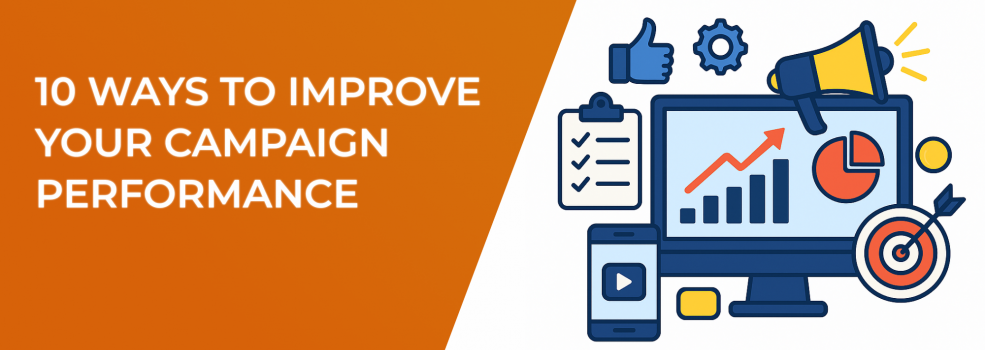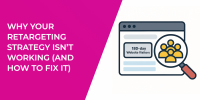Struggling to lift Facebook ad performance can feel like pushing an overloaded cart uphill: costs inch higher, click-through rates stall, and every “fresh” idea fizzles out. The truth is that meaningful growth rarely comes from one flashy move. Instead, it’s the sum of many small, smart tweaks — each grounded in Facebook advertising analytics — that compounds into real momentum. The ten strategies below blend data, creative thinking, and Facebook advertising best practices so you can turn plateaus into progress.
Apply a few of these tips and you’ll notice smoother delivery and cheaper conversions. Stack them all and you’ll build a repeatable engine of Facebook advertising optimization that keeps outperforming rivals who still depend on guesswork.
1. Begin With Crystal-Clear Objectives and Benchmarks
When goals stay fuzzy, decisions default to opinion. Start by writing down exactly what a win looks like:
-
Aim to beat your industry’s average click-through rate by at least 20%.
-
Lock in a maximum acceptable cost per result before you spend a dollar.
-
Set the highest cost-per-click you’re willing to tolerate until sales data rolls in.
-
Know your breakeven return on ad spend so a dip never sneaks past you.
Set clear benchmarks for CTR, CPC, and ROAS before launching your campaign.
If you’re still weighing whether lead generation, conversions, or traffic is the smartest objective, our article Meta Ad Campaign Objectives Explained unpacks each choice with real-world examples.
2. Tighten Account Structure With Advantage Campaign Budget
A messy account hides problems and slows fixes. A streamlined structure powered by Advantage Campaign Budget (Meta’s spin on campaign budget optimization) channels spend toward the best-performing ad sets automatically:
-
One campaign = one goal to keep learning signals clean.
-
Separate ad sets by audience type, not by creative theme, so you see what truly moves the needle.
-
Name ads clearly — hook, format, and test date — so reporting is painless.
Running into the dreaded “Ad Set May Get Zero” warning as you reorganise? Check out Why You See 'Ad Set May Get Zero' on Facebook and How to Fix It for quick diagnostics.
3. Verify Your Pixel and Conversions API
Bad data is performance poison. A single misfiring event forces Meta to guess, and guesswork drives up costs. Protect your tracking stack:
-
Create the Pixel and fire every standard and custom event that matters.
-
Mirror each browser event with the Conversions API to survive cookie loss.
-
Use the Test Events tool before launch; five minutes of QA can save five days of lost learning.
4. Craft Thumb-Stopping Creative Early and Often
People scroll in milliseconds. If you don’t clinch attention fast, extra ad impressions won’t save you.
-
Lead with bold color contrast or an unexpected angle.
-
Favor square or vertical videos to own more mobile real estate.
-
Keep copy snack-size and front-load the value proposition.
-
Position a single call-to-action high, no treasure hunts.
Thumb-stopping creative captures attention and drives engagement instantly.
Not sure which container will showcase your message best? Our comprehensive guide to ad formats – The Ultimate Guide to Facebook Ad Formats – maps specs, strengths, and use cases.
5. Speed Up Testing With Dynamic Creative and Ads Analysis
Manual A/B tests are slow; Dynamic Creative spins dozens of combinations in minutes.
-
Feed Dynamic Creative multiple headlines, texts, images, and videos.
-
Slice results by placement, age, and device to uncover hidden winners.
-
Pause any asset that burns spend with a weak link-click CTR.
6. Expand or Refine Audience Targeting
Audience strategy is a balancing act: too narrow suffocates scale, too broad sprays budget.
-
Try broad targeting if your pixel is healthy and rich with recent events.
-
Refresh lookalike audiences every 30 days; test 1%, 5%, and 10% seed sizes to fuse precision with reach.
-
When performance fades, widen if cramped, tighten if overspending.
Before you launch that next audience test, revisit the fundamentals in Facebook Ad Targeting 101: How to Reach the Right Audience to be sure your filters align with growth goals.
7. Balance Bids, Budgets, and Learning Windows
Doubling budget overnight often resets learning and inflates CPMs. Follow the 20% rule: raise spend no more than 20% every 48 hours or set manual cost caps to protect CPA.
When it’s time to push spend, follow the principles in our scaling playbook The Science of Scaling Facebook Ads Without Killing Performance so ROAS doesn’t fall off a cliff.
Smart pacing and accurate tracking help you exit the learning phase faster.
For high-ticket products, lengthen attribution windows so Meta can credit late-stage buyers.
And if an ad set feels marooned in learning, How to Finish the Facebook Learning Phase Quickly walks you through step-by-step fixes.
8. Watch Frequency and Placement Breakdown
Frequency creep quietly erodes results as audiences tire of seeing the same creative.
-
Rotate ads or refresh creative the moment cold traffic hits 3–4 impressions per person.
-
Run a weekly placement report: if Stories soak budget without converting, cap them; if Reels deliver cheap traffic and solid conversions, double down.
Spot the earliest hints of ad fatigue with the checklist in Ad Fatigue on Facebook: How to Spot It Early and Fix It Fast.
9. Track the Metrics That Matter Every Day
Dashboards look impressive; habits win campaigns. Make a five-minute daily ritual:
-
Check cost per result versus last week.
-
Compare yesterday’s ROAS to your seven-day average.
-
Review click-through rate for sudden dips that hint at creative burnout.
10. Iterate Relentlessly—Small Wins Compound
Real Facebook ad optimization is a marathon. Each micro-improvement — lower CPC here, higher CTR there — stacks up:
-
Swap headlines weekly; archive the laggards.
-
Batch-shoot UGC monthly to keep the pipeline fresh.
-
Refresh lookalikes quarterly to reflect new buyers.
-
Revisit benchmark data each season to stay ahead of algorithm tweaks.
Wrapping Up
Every tactic above delivers value on its own, but the magic appears when they click together. Clear objectives shape cleaner structures; cleaner structures feed better data; better data drives sharper creative and smarter budgeting. Layer these moves and your campaigns won’t just improve, they’ll compound results month after month.
Save this playbook, revisit it often, and keep experimenting. There is always another insight, another edge, another way to push your retargeting or cold-prospecting campaigns further. Keep testing, keep learning, and your performance will keep climbing.

